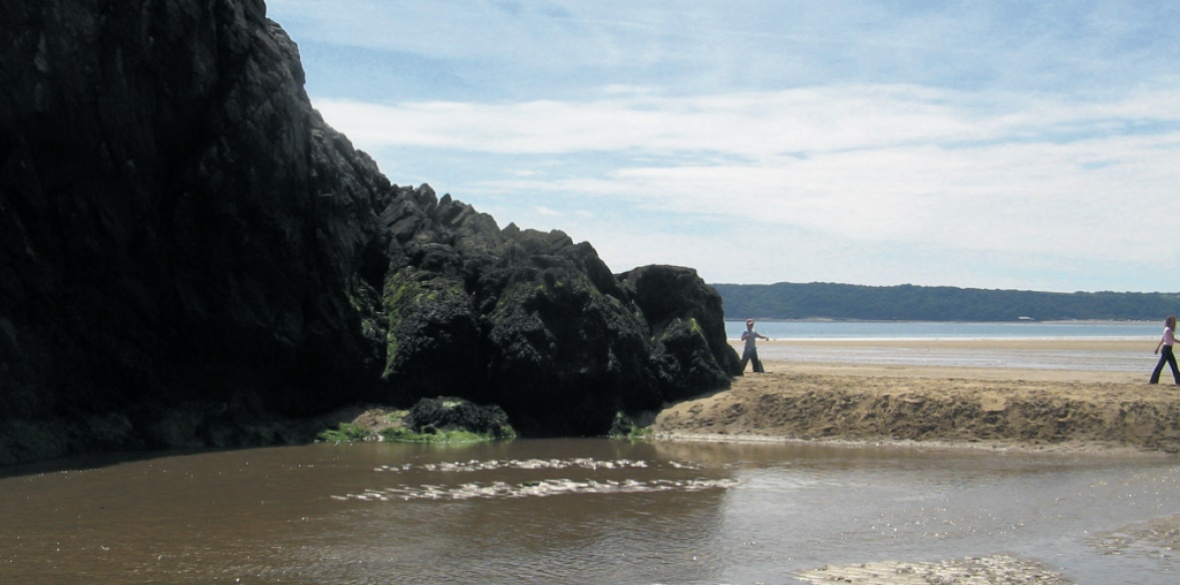This is the last article you can read this month
You can read more article this month
You can read more articles this month
Sorry your limit is up for this month
Reset on:
Please help support the Morning Star by subscribing here
I am a customer of Good Energy, so that, when they informed us that their future plans involved investing in and receiving electricity produced by the Swansea Bay Tidal Lagoon, I was delighted, but unfortunately, as time has progressed, I started to see the wood from the trees.
The first problem started at home where Mark Shorrock had bought Dean Quarry in St Keverne and proposed to build a new port right in the Manacles, which is a Marine Conservation Zone (MCZ) and is described by Dr Linsay Dodds of the WWF as “the jewel in the crown of Britain’s MCZs.”
It is home to jewel anemonies, pink sea fans, plumose anemone, spiney lobster and the protected pink maerl, also harbour porpoise, bottlenose dolphins and Risso’s dolphins together with basking sharks are regularly sited here. Grey seals also haul themselves out onto the beaches nearby. There are now fewer grey seals in the world than African elephants. It is also a breeding ground for bass. The Nature Conservation Committee of Defra has stated that the maerl beds should be treated as a non-renewable source.
Adjacent to the quarry are an SSSI, an AONB, an NNR (National Nature Reserve), an SAC (Special Area of Conservation), The Helford and Lizard Special Areas of Conservation, The Lizard National Nature Reserve and Trebarveth Scheduled Monument. Also of significance is historical archaeology, The John, The Mohegan, The Andola, The Spiridian Vagliano — and HMS Primrose is wrecked there.
Given that local fishermen have had to stop fishing around the Manacles because it is an MCZ, why allow industry in? As I do not have the space to go into detail, may I recommend The Manacles MCZ by Exeter University Sea, Search and The Marine Conservation Society which details what will be lost.
The quarry will impact very negatively on local farming. There are 4 million litres of milk produced locally, most of it organic, which includes the famous Roskilly’s Organic Farm, which will all be put at risk from dust. This is not to mention big lorries going through the village and the increased risk of lung cancer for the population from the dust in the air. Dean quarry is not the only possibility for sourcing the rock. If this ill-conceived scheme does go ahead, then there are Glensanda quarry in Scotland, which is seven miles from the nearest road, Stema Mibau’s Larvik quarry in Norway, which boasts boats of 36,000-40,000 tonnes as opposed to boats of 5000-9000 tonnes proposed for Dean quarry, which has already thrown their caps into the ring and of course Wales itself, which is not without the odd rock.
I decided to go to one of Mark Shorrock’s periodic public presentations and was shocked to find out that he plans to build lagoons all around Wales and the rest of the UK, his patter being that, as the tides are out of phase around the British Isles, the generators will be out of phase with each other, giving constant baseline generation, all of which sounds very plausible until you come to look at the facts. Again I do not have the space to go into detail, but would refer you to Swansea Bay Tidal Lagoon and Baseload Generation in the UK by Euan Mearns for chapter and verse.
He built a model based on the seven lagoons using the tides at Workingham, Heysham, Llandudno, Mumbles, Hinkley Point, Newhaven and Immingham which are spread along the British coast in areas with the highest tides, and shows four periods of zero production each day. The vital statistics for Swansea peddled to the government were 320 MW capacity, 530 GWh per year at a cost of £1.3 billion.
In reality. the mean output is 60MW and a lot of the time the output is zero, so paying £1.3 billion is a very expensive way to generate electricity and all the lagoons will need dredging. If and when you have a series of lagoons in place, the magic number is three hours difference between the tides at the various lagoons, six hours is a passport to bankruptcy, as rather than smoothing out the intermittency, it amplifies it.
Comparing the Swansea Bay Tidal Lagoon to Hinkley Point Nuclear Power Station, the actual output of Swansea is 60MW, Hinkley is 2720 MW at a cost of £18 billion, which results in £6.6 million per MW, which is insanely expensive, but Swansea is supposed to cost £1.3 billion, which results in a cost of £21.7 million per MW which not only is considerably worse, but is also intermittent, so will have to be supplemented from the grid.
Shorrock does not have an environmental impact assessment or marine licence for either the Manacles or Swansea Bay. Again here I draw the reader’s attention to Pontardawe and Swansea Angling Society — Tidal Lagoon proposed for Swansea Bay.
The anglers’ concerns are massive unnatural flows in Swansea Bay interfering with normal migration routes and behaviour, fish being drawn into the turbines and killed, fish being drawn through the turbines into the impound and trapped, fish being driven away from the area by unfavourable conditions etc — and justifiably so. The turbines will be 7m in diameter rotating at about 60rpm which equates to three blades a second.
I recently read the book Sustainable Energy — without the hot air by Professor David MacKay. One method of power generation which ticks all the boxes is Solar Parabolic Mirrors planted in deserts.
The obvious country for the UK to work with is Libya, but what have we done, Blair, the French and the Yanks? We brought Gadaffi in from the cold, then under instructions from the US, we bombed the country to smithereens and reduced it to anarchy.
Who benefits from this? The US oil companies. Another option of course would have been Syria — same story again. We need decisive action now at home and abroad to break the links with polluting energy but not fall for seemingly easy options like the Swansea Bay tidal lagoon that are bad investments and bad for our local environment.
John Cutcliffe is the general secretary An Kesunyans Kernow.











